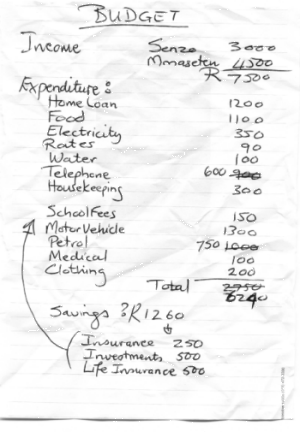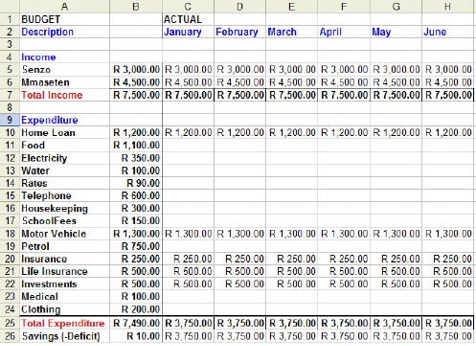| Optional Activity 5-B1: Using a spreadsheet to create a budget |
|
From Activity 1, you know that a spreadsheet
is a programme that is used mainly for working with numbers. It
is used for making calculations (such as adding numbers, working
out averages etc.) and creating graphs. Here is a case study which
shows a practical way to use a spreadsheet. Senzo Mathobela is a high school educator in the a rural district. He is a typical educator like you and me. He is married. His wife, Mmaseten, is a deputy-principal at a primary school in the neighbouring village. They have one child who is still of school-going age. Typically, like most of us, Senzo and Mmaseten live anxiously at the end of the month because they are running out of money. After chatting with a colleague who had completed a distance learning module on spreadsheets, Senzo decided that he would visit that colleague after school so that he could learn to use a spreadsheet to draw up a budget. They took out a piece of paper and drafted the
following budget:
After working out a draft budget they discovered that Senzo would have R1260 to save every month. After adding the R250 for insurance that he forgot about, Senzo decided that he would budget for R1000 on Investments and Life Insurance cover. Senzo commented that the draft budget on paper was starting to become a bit messy. At this point his friend showed him how to create this budget on a spreadsheet. This is what it looked like:
NEXT Go to Optional Activity 5-B2: Creating a Budget in a Spreadsheet. |

